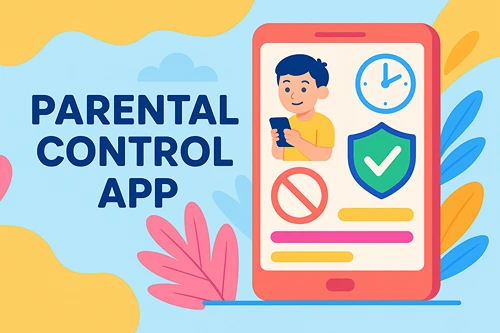How To Choose The Best Pediatrician For Your Child
Every parent wants a healthy and fulfilling life for their child. Among the many things you can do to gift your loved one this type of life is to choose only the best pediatrician around to cater to them. But you may wonder: how do I separate the wheat from the chaff? Exploring the essential qualities can help you choose right.
From their expertise to their approach, the ideal a child-centric pediatrician can make all the difference in your child’s health journey.
Credentials and Experience
Parents should consider a pediatrician who is not only medically qualified but also understands the broader health needs of children. In complex situations, patient advocacy becomes vital. Advocates play a crucial role in supporting families by helping them understand medical information and navigating healthcare systems efficiently. If you feel overwhelmed, it’s wise to find patient advocates who can assist in decision-making processes, ensuring your child’s health needs are properly addressed.
- Board certification: Ensure the pediatrician is certified by the American Board of Pediatrics (ABP) or a similar body if you’re outside the U.S. This certification means they’ve completed specific training and passed exams that validate their expertise in child health care.
- Medical school and residency: Knowing where your pediatrician trained can give you an idea of their medical education background. Top medical schools are often associated with rigorous training programs, but excellent pediatricians come from a wide range of schools.
- Fellowships or additional training: Some pediatricians undergo additional training in pediatric specialties such as pediatric oncology, endocrinology, or pulmonology (which could be particularly relevant if your child has asthma). This extra training can provide deeper expertise in specific areas.
- Licenses: Check that the pediatrician is licensed to practice in your state or region. This ensures they meet regional standards and are legally permitted to provide care.
- Professional memberships: Memberships in pediatric associations, such as the American Academy of Pediatrics (AAP) or its international equivalents, indicate that a pediatrician is committed to staying current with the latest advancements and standards in pediatric care.
These credentials are signs of a pediatrician’s dedication to their field and commitment to providing the best possible care for children. Parents should consider not only pediatricians but also the importance of choosing the best family doctor. A reputable family doctor offers accessible health services and extensive advice when making crucial health decisions, accommodating the whole family’s unique needs.
Find a trusted family care physician to better manage health from infancy to adulthood. Consider asking about these qualifications during your initial consultation.
Office Environment and Staff
Hospitals might not be a comfortable place for your child. That’s why getting a friendly pediatrician and hospital should be a top priority. Look out for the following:
- Child-friendly atmosphere: When you visit, notice if the office is welcoming to children. Are there books, toys, or a play area? Such amenities can make waiting times less stressful for both you and your child.
- Staff interaction: Pay attention to how the staff, including receptionists and nurses, interact with children and parents. Are they patient and kind? The first faces you see often set the tone for the entire visit.
- Efficiency and organization: Observe how the office operates. Is it well-organized? Do appointments run on time? An efficiently managed office can reduce wait times and improve your overall experience.
- Cleanliness and safety: Check for cleanliness. A clean environment is vital for preventing the spread of germs, especially in a pediatric setting.
First impressions do matter. If your gut feels like something is off, do not ignore it. Inquire.

Office Location and Hours
When it comes to office location and hours, the following should come to mind:
- Proximity: Choose a pediatrician whose office is close enough to your home, work, or child’s school. This can make it way easier to get to appointments without disrupting your day too much.
- Accessibility: Consider how easy it is to get to the clinic. Is it a simple drive? Is parking available? How about public transportation options?
- Office hours: Look for a pediatrician who offers hours that match your availability. If you work traditional hours, early morning, late evening, or weekend availability can make a huge difference.
- Emergency after-hours service: Does the practice offer a way to consult the pediatrician or a nurse after hours? Some practices have an on-call service for emergencies.
Convenience matters. You’ve got to think through the different scenarios here then make your decision.
Hospital Affiliations
The hospital that your pediatrician is affiliated with counts. When out scouting, you should focus on the following:
- Quality of the hospital: Check the reputation of the hospitals where the pediatrician can admit patients. You should specifically aim for hospitals with accredited pediatric departments.
- Continuity of care: It’s advantageous if the pediatrician can see your child in the hospital where team based care is valued. This continuity helps in managing your child’s care since they are already familiar with your child’s health history.
- Insurance coverage: Health emergencies or even routine procedures can be quite a shocker when it comes to costs. That’s why you’ve got to make sure the hospitals are covered by your health insurance plan to avoid unexpected costs.
Quality is something you shouldn’t compromise on. In some cases you may find it to be a little bit on the pricier end (depending on the scope of your insurance coverage), or may be busier than other present solutions. But if it can guarantee your child’s health, that may be a very small price to pay.
Communication Style
How a pediatrician addresses your concerns should be a dealbreaker. Focus on the following:
- Clarity and patience: Does the pediatrician take time to explain diagnoses and treatments in a way you can understand? It’s important they are patient, especially when addressing your concerns or explaining health issues to your child.
- Empathy and understanding: Evaluate whether the pediatrician shows genuine care and empathy towards your child. A supportive and kind approach can significantly ease a child’s anxiety about doctor visits.
- Engagement: Does the pediatrician engage with your child directly? Pediatricians who speak directly to children, making them feel heard and important, can make the overall experience way better for the child.
How a pediatrician approaches your child can set the tone for the whole experience. Remember, your child may not be feeling too well by the time they go to the hospital. Or maybe they are just plain anxious.
A disinterested pediatrician, or one who doesn’t take the time to approach your child at their level, will only add to the anxiety and maybe make things significantly worse.
Availability for Emergencies

Things happen when it comes to kids. That’s why you should plan for emergencies when choosing a pediatrician.
- After-hours services: Determine what the protocol is for after-hours situations. Can you call a dedicated number, or is there a nurse hotline? Knowing you have a plan in place can relieve stress during unexpected illnesses or other medical emergencies.
- Telehealth options: Check if the pediatrician offers telehealth or virtual services for non-emergency consultations after hours. This can be especially convenient for addressing minor concerns or getting advice without needing an in-person visit.
- Response time: Ask about typical response times for emergency calls or emails. Knowing how quickly you can expect an answer can help manage anxiety when urgent situations arise.
- Coverage: Find out if there is always a pediatrician on call, even when your primary pediatrician isn’t available. Continuous coverage ensures that professional advice is just a phone call away, regardless of the time or day.
Emergencies don’t choose a time. So, make sure you’re prepared for anything at any time by getting involved with experts who are prepared for anything at any time.
Patient Reviews and Recommendations
Other patients who’ve been to a facility can tell you a lot more than what websites, brochures, and even personal visits may be able to reveal. Look out for the following:
- Online reviews: Search for reviews on websites like Healthgrades, Google, or even Facebook groups dedicated to local parents. Look for comments about how the pediatrician handles various health issues, their approach to treatment, and overall satisfaction.
- Community feedback: Talk to other parents in your neighborhood, at your child’s school, or in parent groups. They can offer personal anecdotes and insights you might not find in online reviews.
- Consistency in feedback: Look for patterns in reviews. If several people praise the pediatrician’s ability to engage shy children, it’s likely a strong point. Similarly, repeated concerns about long wait times might be a valid red flag.
- Specific praise or concerns: Note any specific praises or concerns relevant to your child’s needs. For example, if your child is anxious about doctor visits, a pediatrician known for their calming manner might be ideal.
When most of the feedback praises a pediatrician or a hospital, the odds are high that it’s a good place. Do your own research and make an informed decision.
Philosophy on Health Care
What’s the pediatrician’s philosophy on care? Focus on the following:
- Initial consultation: Use your first meeting to discuss the pediatrician’s views on health care extensively. Ask about their approaches to preventive care, treatment options, and routine health checks.
- Vaccination policy: Since vaccinations are a fundamental part of child healthcare, understand the pediatrician’s stance. If vaccinations are a priority for you, ensure the pediatrician supports the standard immunization schedule.
- Approach to antibiotics and medications: Some doctors prefer a conservative approach to medication, while others might prescribe more liberally. Clarify their policies to ensure they match your comfort level regarding medicinal interventions.
- Handling of developmental concerns: Ask how they approach developmental screening and issues. Whether it’s language delays, behavioral challenges, or learning difficulties, ensure their methods and resources align with what you believe is best for your child.
- Holistic and alternative treatments: If you’re inclined towards a holistic approach, check if the pediatrician is open to integrating alternative treatments with conventional medicine. This might include dietary advice, natural remedies, or referral to specialists like chiropractors or acupuncturists.
Discussing these aspects can help you gauge whether the pediatrician’s healthcare philosophy sits right with your family’s health journey.
Closing Thoughts
Choosing the best pediatrician for your child can be the best investment you ever make concerning their health. Research all the options out there and settle for the one that meets your criteria and safeguard your little ones’ health.





 Katie Brenneman is a passionate writer specializing in education, mental health, family lifestyle and online safety. When she isn’t writing, you can find her with her nose buried in a book or hiking with her dog, Charlie. You can follow her on
Katie Brenneman is a passionate writer specializing in education, mental health, family lifestyle and online safety. When she isn’t writing, you can find her with her nose buried in a book or hiking with her dog, Charlie. You can follow her on 
 Author bio: Cora Gold is the Editor-in-Chief of women’s lifestyle magazine,
Author bio: Cora Gold is the Editor-in-Chief of women’s lifestyle magazine, 


